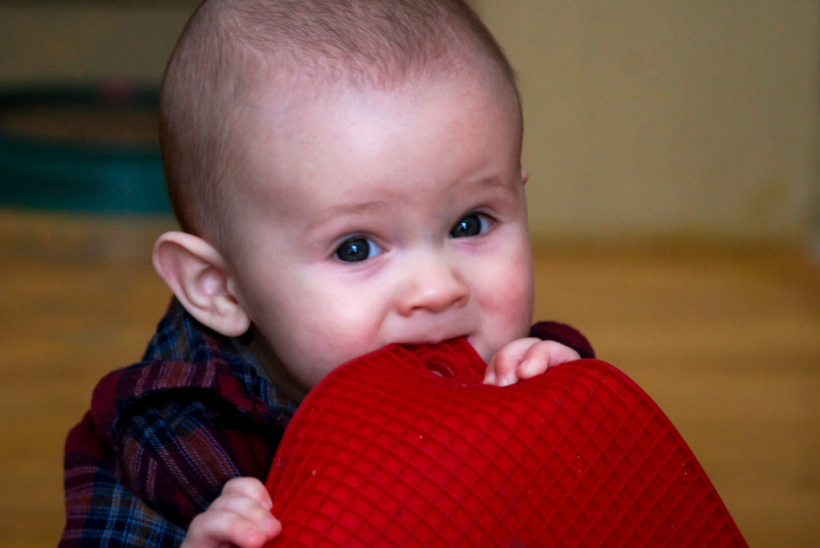
Small amounts of the endocrine disruptor bisphenol A leach from many plastic baby teethers, including some labeled BPA-free, a new study shows (Environ. Sci. Technol. 2016, DOI: 10.1021/acs.est.6b04128). The teethers also leach low levels of other endocrine-disrupting chemicals, including parabens. However, the estimated exposure to BPA for babies is much lower than the safety thresholds suggested by U.S. and European regulatory agencies.
Kurunthachalam Kannan of the New York State Department of Health’s Wadsworth Center and his colleagues study the exposure of infants and children to chemicals in the environment, including endocrine disruptors. They recently decided to examine plastic baby teethers, a potential source that has not been clearly characterized. Kannan’s team tested 59 different teethers—53 of which are sold in the U.S. —for 26 potential endocrine disruptors. These include bisphenols, which are used to make polycarbonate plastics and epoxy resins; parabens, which are used as preservatives; benzophenones, which prevent UV damage; and antimicrobials, including triclosan and triclocarban. They soaked the teethers in highly purified water, free of any of the contaminants being tested, for an hour to simulate the average amount of time per day that babies suck on a teether. After measuring the chemicals that leached into the water using high-performance liquid chromatography and tandem mass-spectrometry, the researchers estimated chemical exposure levels for average-sized, one-year-old children.
They found that the teethers leached small amounts—up to hundreds of nanograms each—of parabens, bisphenols, and benzophenones, and even smaller amounts of antimicrobials. BPA leached from all of the teethers, despite the fact that 48 of the 59 were labeled BPA-free.
The team calculated a maximum daily BPA exposure level for babies from the teethers of about 13 ng/kg body weight, which is 0.3% of the tolerable daily intake of 4 μg/kg recommended by the European Food Safety Authority, and 0.03% of the U.S. EPA’s safety threshold of 50 μg/kg/day. For parabens, the team found a maximum daily exposure level of 4 ng/kg body weight. The EFSA has established an acceptable daily intake of 10 mg/kg/day for methyl and ethyl paraben combined.
“This is one of the first pieces of evidence that ‘BPA-free’ may not actually mean that,” saysHeather Patisaul, a toxicologist and endocrine disruptor expert at North Carolina State University. While noting that the exposure levels calculated in the study are very low, she says the work emphasizes how “tiny exposures start to add up over the course of the day if you’re talking about a baby that has plastic teethers, plastic cups, plastic diapers,” and so on. It’s important to determine where the BPA the researchers detected is coming from, she adds—it could come from the product itself or its packaging.
Source: Link


